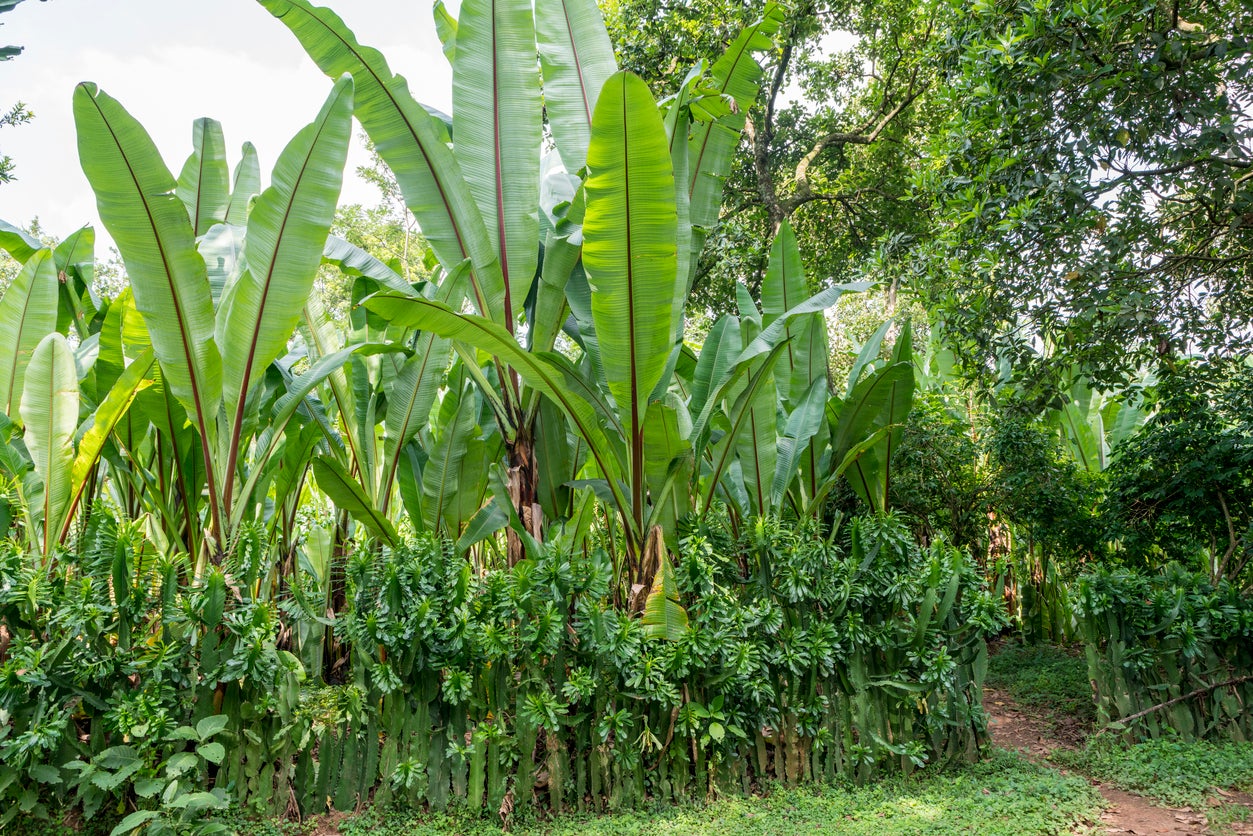Could Ethiopia’s ‘false banana’ be a wonder crop in face of the climate crisis?
- What is Ethiopia’s ‘false banana'?
- Why are they so resilient in the face of climate change?
- So why are they only grown across a relatively small area?

The climate crisis, exacerbated by the Covid pandemic, has increased food insecurity for millions of people, particularly in the Global South.
The United Nations warns that over the next 30 years, food supply and food security will be severely threatened if more is not done to tackle global heating, and crops’ vulnerability to increasing extremes such as prolonged droughts, heatwaves, flash-flooding and insect infestations.
For example, global yields of both maize and wheat are projected to significantly decline due to climate impacts caused by emissions from fossil-fuel burning.
In Africa and Central America, nearly 950 million metric tonnes of maize is consumed annually with the corn playing a central role in daily diets. Wheat currently provides more than 20 per cent of the world’s calories and protein.
Horticulture and agriculture experts are increasingly focused on lesser-known but hardy, versatile crops which can sustain a growing global population in a rapidly-heating world.
What is Ethiopia’s ‘false banana'?
The enset, also known as the false banana or Ethiopian banana, is a perennial, ten-meter high plant grown in the southwestern Ethiopian Highlands, where it is a staple food for 20 million people.
It’s not actually a fruit - in fact the bit which looks like a banana is inedible - but the starchy stems and roots can be consumed. The pulp is fermented and made into dough for dishes like porridge and kocho - a cheesy-tasting flatbread that is typically eaten for breakfast.
The enset isn’t cultivated outside the region although grows wild in river valleys and gorges as far south as South Africa.
While the wild plant is bitter and unpalatable, its appearance suggests that there are climates where it could be grown over a much larger region.
Ensets are also incredibly efficient as a food source with as few as 15 plants feeding a person for a year.
Ethiopian communities call it “the tree against hunger” as it’s the one crop that can be turned to when others fail.
Why are they so resilient in the face of climate change?
The enset could feed more than 100 million people in the future even as climate impacts become more severe.
That’s according to a new study by Dr James S. Borrell and Olef Koch, at Royal Botanic Gardens Kew, which was published in the journal Environmental Research last month.
“Feeding a growing population at a higher standard of living, whilst weathering the impacts of climate change will test the capacity and resilience of our food systems,” the scientists noted. “Although the scale of this challenge is unprecedented, human ingenuity is not.”
They point to the examples of potatoes and tomatoes, which originated in South America, but are now grown widely around the world.
The enset is known to be drought resistant, disease tolerant and because it grows year-round can be easily stored.
The study notes that while climate extremes may cut potential for growing enset by 37-52 per cent by 2070, large swathes of areas will remain suitable in the Ethiopian Highlands, in Kenya and Uganda, particularly around Lake Victoria and the Drakensberg Range, the main mountain range of Southern Africa.
“When incorporating the genetic potential of wild populations, enset cultivation might prove feasible for an additional 87.2–111.5 million people, 27.7–33 million of which are in Ethiopia outside of enset’s current cultivation range,” the authors wrote.
So why are they only grown across a relatively small area?
The Kew research team puts the enset’s limited availability as down to a combination of history, culture and geography.
The Ethiopian Highlands, home to 80 per cent of Africa’s tallest mountains, are an isolated region. The rugged topography means that communities have remained largely intact and free from outside influence for centuries.
While the enset grows well in this region, it’s unsuitable for other parts of the landlocked country such as the dry lowlands.
Growing enset has also needed extensive local knowledge and researchers say that this has possibly formed another barrier to expanding its cultivation.
Join our commenting forum
Join thought-provoking conversations, follow other Independent readers and see their replies
Comments
Bookmark popover
Removed from bookmarks